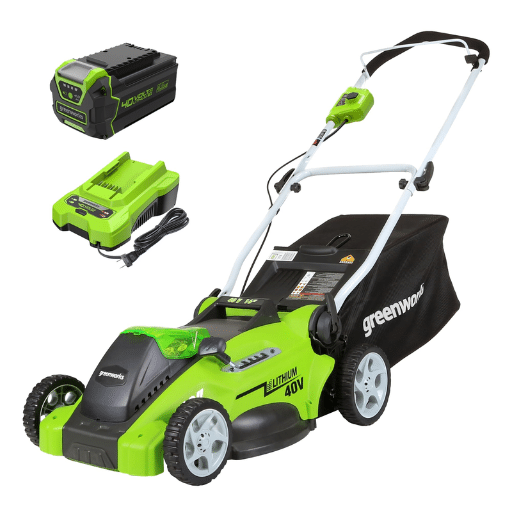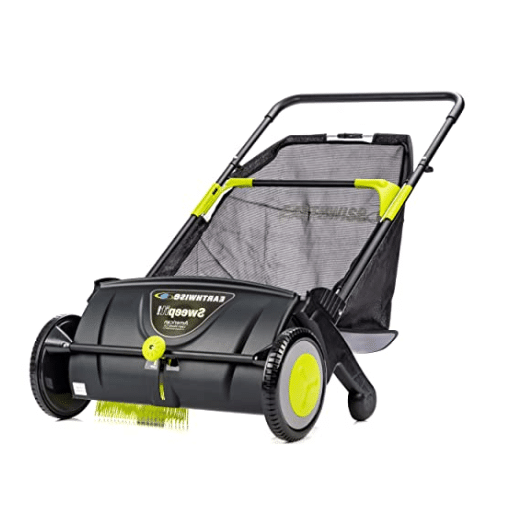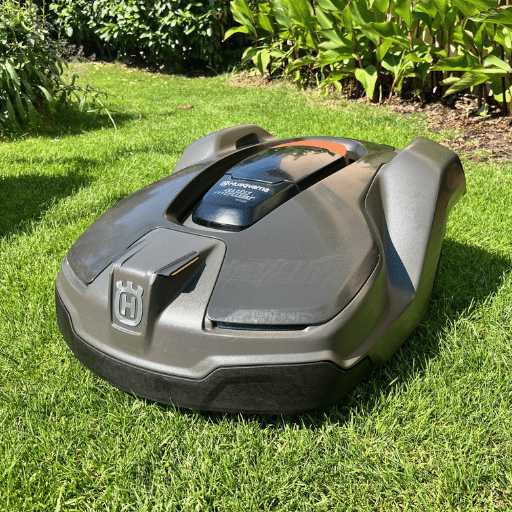Unlocking the secrets of a sugar cane juicer involves understanding the integral aspects that go into selecting the best machine for your needs. In this comprehensive guide, we will explore everything from the key features that define top-performing juicers to practical tips on what to look for when making a purchase. We’ll delve into the differences between manual and electric models, considering factors such as efficiency, cost, and ease of use. Additionally, the blog will highlight maintenance tips to ensure your juicer lasts a lifetime and explore the health benefits of incorporating fresh sugar cane juice into your diet. Whether you’re a business owner looking to expand your product offerings or a home enthusiast eager to enjoy fresh juices, this guide aims to equip you with the knowledge you need to make an informed decision.
What is a sugar cane juicer and how does it work?

A sugar cane juicer is a specialized machine designed to extract juice from sugar cane stalks. These machines typically operate using a series of rollers or gears that crush the fibrous cane, squeezing out the precious juice while keeping the pulp separate. As the sugar cane is fed through the juicer, the rollers apply pressure, breaking down the structure of the cane and releasing the natural sugars and nutrients. The juice is then filtered to remove any remaining particles, resulting in a smooth and refreshing beverage. Some juicers are manual, requiring physical effort to turn the gears, while others are electric, offering a more convenient and efficient juicing process.
Understanding the sugar cane juicer mechanism
The main components of the sugar cane juicer together with the mechanism that it incorporates are the rollers. These rollers are constructed from stainless steel to withstand wear and tear. When sugar cane stalks are inserted into the machine the roller exerts pressure and the sugar cane fibers are crushed and the juice is produced. The process often includes a series of rollers to maximize juice yield, with initial rollers crushing the cane while secondary rollers apply additional pressure to extract the remaining juice. Most sugar cane juicers also have a filtering element that rejects certain materials from the liquid in order to have a clean liquid. Manual operated ones have to turned by a hand crank while electric models are operated continuously without cranking which means electric ones are fit for commercial purposes. Knowing this mechanical insight help the owners to understand the design and working principles of these devices thereby ensuring that their intended tasks are truly achieved and their maintenance measures are properly followed.
The role of rollers in juice extraction
The role of rollers in juice extraction is crucial, as they serve as the primary components of a sugar cane juicer, responsible for crushing and extracting juice from the fibrous stalks. These rollers are typically manufactured from durable materials such as stainless steel to withstand intense pressure and maintain operational longevity.
Key technical parameters of rollers include:
- Material: Stainless steel or heavy-duty cast iron to ensure durability and resistance to corrosion.
- Diameter: Generally ranges from 4 to 8 inches, depending on the juicer’s size and capacity.
- Pressure Capacity: Must be strong enough to exert up to 1000 psi, ensuring effective juice extraction.
- Configuration: Typically involves two to three rollers arranged in a parallel alignment to optimize crushing and extraction efficiency.
- Speed: An optimal speed range may vary between 10 to 25 rotations per minute (RPM) for manual models and up to 50 RPM for electric models, ensuring thorough extraction without overheating or excessive wear.
Manual vs electric sugar cane juicers
When considering sugar cane juicers, it’s important to weigh the options between manual and electric models. Manual sugar cane juicers, which rely on physical effort, tend to be more affordable and portable. They are ideal for small-scale operations or personal use, where the volume of juice required is minimal. Their simplicity also means less maintenance and a longer lifespan due to fewer mechanical parts that can fail.
On the other hand, electric sugar cane juicers are designed for higher yield and efficiency, suitable for commercial use or larger operations where speed and output are critical. Electric models can rapidly process more sugar cane with less manual intervention, saving time and reducing labor. However, they require a reliable power source and regular maintenance to ensure optimal performance. When selecting between the two, consider factors such as cost, intended use, production volume, and available resources to determine the most suitable juicer for your needs.
How to choose the best commercial sugar cane juicer?

To choose the best commercial sugar cane juicer, start by evaluating your specific needs and resources. First, assess the required production volume—if high output is essential, an electric model would be more suitable due to its efficiency and speed. Consider the cost, balancing the initial investment against long-term benefits like time savings and increased yield. Analyze the available resources such as power supply, as electric juicers need a stable power source, whereas manual juicers are more versatile in locations without electricity. Additionally, consider ease of maintenance and cleaning, as frequent operation will require regular upkeep to ensure optimal performance. Finally, check for any additional features like adjustable settings or safety mechanisms that might enhance usability and safety. Balancing these factors will guide you in selecting the most effective commercial sugar cane juicer for your operation.
Key features of a commercial sugar cane juicer
When choosing a commercial sugar cane juicer, I’ve found that focusing on several key features really helps in making the right decision. Firstly, durability is crucial as the machine needs to withstand continuous operation. I look for models made from high-quality materials like stainless steel, which resist corrosion and wear. Secondly, ease of use is important. I prefer juicers with intuitive controls and ergonomic designs that allow for painless operation. Thirdly, I consider the efficiency of the juicer, ensuring it can handle the intended production volume with minimal energy consumption. Safety features, such as emergency stop buttons and protective casing, are also vital for preventing accidents during operation. Lastly, I prioritize ease of cleaning and maintenance, opting for models with detachable parts and straightforward maintenance procedures that fit into my routine.
The importance of stainless steel material
Stainless steel is essential for a commercial sugar cane juicer due to its several advantages. First, its resistance to rust and corrosion protects the machine from moisture and sugarcane juice, ensuring longevity. This material is known for its durability, capable of withstanding the wear and tear of regular usage without losing its structural integrity. Additionally, stainless steel provides a reliable ease of cleaning, as its smooth surface repels the accumulation of residues, making maintenance straightforward. This aligns with the ease-of-maintenance factor I prioritize. Lastly, the sleek and polished look of stainless steel not only adds to the aesthetic value but also signals quality and strength, which are critical indicators when making an informed purchasing decision.
Comparing heavy duty models
When evaluating heavy-duty sugar cane juicers, it is essential to consider factors such as build quality, performance, and functionality, These models often stand out due to their robust construction, typically made with high-grade stainless steel to endure intense usage and corrosive environments. Performance-wise, they come equipped with powerful motors capable of efficiently processing large volumes of cane, directly impacting productivity and operational success. Furthermore, ease of use remains a consistent theme, with ergonomic designs facilitating smooth operation.
What are the benefits of using a sugar cane juicer machine?

The use of a sugar cane juicer machine has many benefits which facilitates the extraction processes as well as improves the quality of the juice extracted. First and foremost, these machines promote effective extraction processes that guarantee minimal amounts of cane waste for every drop of juice sought. This increases the value addition of the juicing and extraction process and also reducing the overall expenditure. In addition, the heat application which is known to destroy nutrients present within juice in order to extract vitamins is not necessary which means the machines’ processes ensure nutrient containment. This implies that the flavor and scent of the juice does not get degraded. Furthermore, there are sugar cane juicers specifically made for bulk production and these are used in commercial or household applications where the equipment will be continuously in use. Finally, because several models have also been fabricated using stainless steel materials, they can be cleaned and do not require much care which makes them long lasting under many conditions.
Health benefits of sugarcane juice
It is said that sugarcane juice is actually very good for one’s health for a couple of reasons. To begin with, it is a good source of instant energy which helps in driving away fatigue. Being rich in carbohydrates and glucose, it also aids in boosting the metabolism of the body. Next, the juice contains plenty of antioxidants which helps the body to fend off diseases. Moreover, this juice can also be looked at as pretty useful for gastrointestinal health because it has a diuretic effect that works as a scrubber to the organism ensuring that the kidneys are properly working and the liver is clean. Moreover, it is also very calming and helps to maintain the temperature inside the body and so is good for people who need relief and comfort.
Efficiency in commercial juice production
The aim of commercial juice production is to maintain high efficiency levels as well as to conserve raw material while managing energy consumption. Those parameters include:
Use of Juicers: The use of modern juicers which are particularly effective in extraction of juice is often regarded as the major requirement for achieving high percentage juice extraction from the raw materials. The efficiency of juicing operations is usually defined in terms of the percentage of juice extracted from the raw material with ideal machines going over 85% extraction.
Speed: An ideal process is one where quality is not compromised with speed. The machines are worked on around 80-100 rpm which is deemed reasonable for the nutrients not to beheat damaged.
Energy Consumption: There is lower power consumption in machines which are efficient. The set target is less than one kilowatt hour to produce one gallon of juice.
Waste Reduction: The target must be to minimize the waste incurred in the process by incorporating other products such as pulp into animal feeding or composting. Producers utilize less than 10 percent of waste from the percentage of original raw materials which can be said to be efficient.
Greater Machine Efficiency: The deployment of certain materials like stainless steel is expected to make a machine more effective, as it will require lower maintenance, and ideally resulting in less downtime.
Versatility in juicing fruits and vegetables
First, I ensure that the juicers I use have the capability to handle a wide variety of produce, from soft fruits like berries and citrus to tougher greens like kale and wheatgrass. This versatility is crucial for creating diverse juice blends and maximizing nutritional benefits. I also pay attention to adjusting settings or using different attachments that can optimize extraction for different textures and types of produce. Moreover, I value machines that offer easy cleaning and maintenance, because they promote sustained use and efficiency. Overall, prioritizing these features helps me achieve the best results in juicing both fruits and vegetables effectively.
How to maintain and clean a sugarcane juice extractor?

To maintain and clean a sugarcane juice extractor effectively, follow these concise steps:
- Disassemble the Machine: Begin by carefully disassembling the extractor, removing all parts that come into contact with the sugarcane juice. This makes it easier to clean every component thoroughly.
- Rinse with Water: Rinse each part with warm water to remove any residues of sugarcane fibers and juice. This step helps prevent build-up, which can affect performance over time.
- Use a Mild Detergent: Apply a mild detergent to clean the parts more effectively. Scrub with a soft brush or sponge to remove any stubborn debris, paying close attention to corners and crevices.
- Rinse Again and Dry: Rinse the parts thoroughly with clean water to ensure no detergent residues remain. Dry each component with a clean cloth or let them air dry to prevent rust or mold growth.
- Reassemble and Lubricate: Once all parts are clean and dry, reassemble the extractor. Regularly lubricate any moving metal components with food-grade oil to maintain smooth operation and prolong the machine’s lifespan.
Tips for keeping your juicer easy to clean
Juicing Right Away After Prep: To reduce waste and time caused by residue, juice your produce as soon as you can. As less pulp residue is obtained from freshly prepared produce, cleaning would be fast and less time-consuming.
Remove and Wash After Use: It is good practice to disassemble and wash every piece after juicing. Pulp and juice leftovers will dry and turn into glue-like substances making cleaning arduous if not washed immediately.
Select a Cleaning Brush for Juicers: Use the cleaning sponge or brush which is made only for juicers to scrub the parts clean. Hard and elastic bristles allow for complete cleansing of all small edges of the parts and the residues that are stuck within.
Submerge in Water and Vinegar: Some times, removable portions can be submerged in water with vinegar mixture. Vinegar which is an organic cleanser would not only help remove mineral residues, but it would disinfect the parts as well.
Never use Distressing Strength Materials: While washing your juicer always remember to avoid scratching pads and intense chemical cleaners as they will ruin the outer surfaces. Rather use a soft cloth along with some detergent and the result will be the same.
Common maintenance practices for long-lasting output
First, I regularly inspect and tighten any loose screws or components to prevent wear and tear. I lubricate moving parts as needed to maintain smooth operation and reduce friction. Additionally, I replace any worn-out parts promptly—the better care I take, the fewer issues arise. Regularly checking the motor for any unusual noises ensures early detection of potential problems. I also make it a habit to store the juicer in a clean, dry place to avoid moisture damage.
References
-
Blog The Beach – How to Juice Sugar Cane with a Breville Juicer: Offers a step-by-step guide on juicing sugar cane using a Breville juicer.
-
Juicernet – NSF Certified Sugarcane Juicer SC-4: Information about the only NSF-certified sugarcane juicer machine available.
-
Juicernet – A Quick Guide to Maintaining Your Sugarcane Juicer: Provides maintenance tips to ensure optimal performance and longevity of sugarcane juicers.
Frequently Asked Questions (FAQ)
Q: What should I consider when choosing a sugarcane juicer machine?
A: When selecting a sugarcane juicer machine, consider factors such as the juicer’s capacity, ease of cleaning, durability, and whether you need a manual or electric model. Additionally, assess the size and weight of the machine to ensure it fits your space and handling preferences.
Q: How does a manual sugar cane juicer differ from an electric one?
A: A manual sugar cane juicer requires physical effort to extract juice, using a hand press or crank mechanism. In contrast, an electric sugar cane juicer automates the process, offering more convenience, especially for commercial settings or juice bars.
Q: What are the benefits of using a Vevor commercial sugar cane juicer?
A: The Vevor commercial sugar cane juicer is known for its efficiency and durability, featuring robust construction and powerful motors to handle large volumes of sugarcane juice production. It’s ideal for juice bars and commercial use where high juice output is needed.
Q: Is a centrifugal juicer suitable for making cane juice?
A: A centrifugal juicer is not typically recommended for making cane juice as it is designed for softer fruits and vegetables. A sugar cane press or a sugarcane juicer machine is more suitable due to the fibrous nature of sugarcane.
Q: Can a sugarcane juicer be used for other fruits like oranges or lemons?
A: While primarily designed for sugarcane, some sugarcane juicers can also handle citrus fruits like oranges and lemons. Check the manufacturer’s guidelines to ensure compatibility with other fruits.
Q: What are the advantages of a 3 stainless steel rollers design in a sugar cane juicer?
A: A sugar cane juicer with 3 stainless steel rollers provides efficient extraction, maximizing juice yield by crushing the cane thoroughly. Stainless steel is also durable and resistant to corrosion, making it ideal for food processing equipment.
Q: How do I maintain my sugarcane juicer for long-term use?
A: Regular cleaning after each use is essential to maintain your sugarcane juicer. Ensure that all parts, especially the rollers and filters, are free of sugarcane residue. Lubricate moving parts as recommended by the manufacturer and store the machine in a dry place to prevent rust.
Q: What is the difference between a sugar cane press and a juice squeezer?
A: A sugar cane press is specifically designed to crush sugarcane to extract juice, often using heavy-duty rollers. A juice squeezer, on the other hand, is typically used for softer fruits and may not be suitable for extracting juice from fibrous sugarcane.
Q: Are there specific features to look for in a manual sugar cane juicer?
A: Look for features such as sturdy construction, ease of use, and efficient juice extraction in a manual sugar cane juicer. Durable materials like alloy or stainless steel and ergonomic handles for better grip are also desirable.
Q: Can a sugarcane juicer machine be used to make craft beverages?
A: Yes, a sugarcane juicer machine can be used to make craft beverages by extracting fresh sugarcane juice, which can be mixed with other ingredients to create unique and refreshing drinks.










